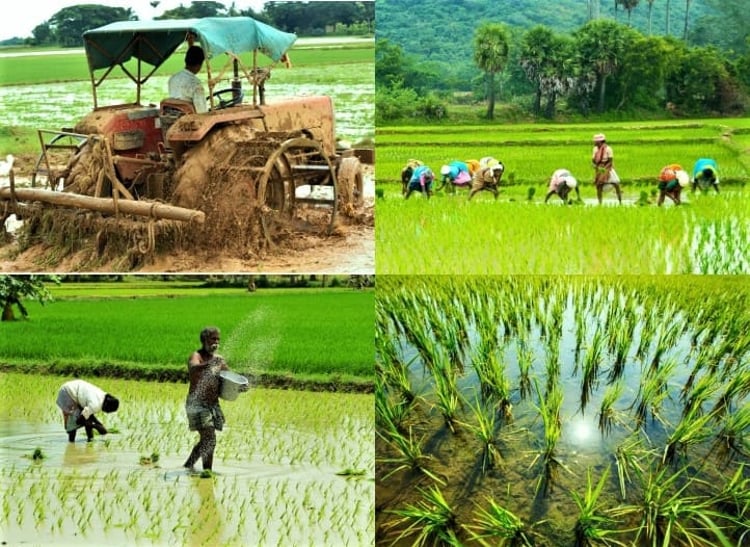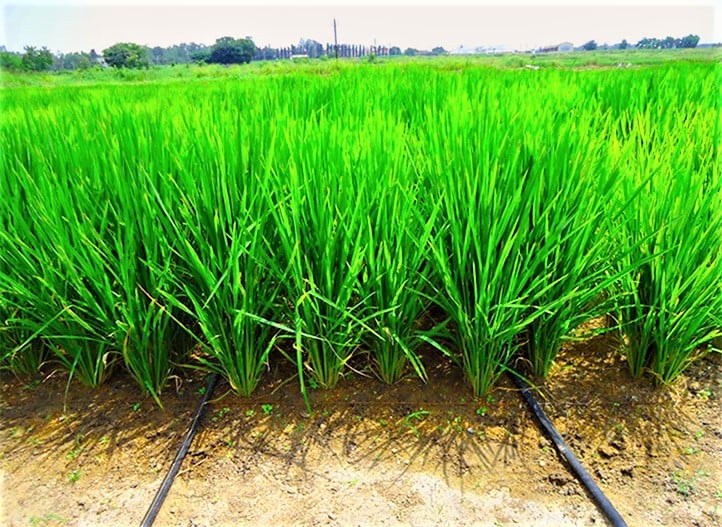Drip irrigation for rice is changing the rules of the game
Netafim’s precision irrigation solutions increase rice yield, improve crop quality through an efficient precision irrigation system, and the right water supply. With Netafim’s drip irrigation, you grow one kg rice in around 60-70% less water than the conventional cultivation system. Also, with drip irrigation, you reduce agricultural investments and increase profits.

Shift from flood irrigation to drip irrigation
Rice is a water-intensive crop. It requires water for three primary purposes – preparing land (puddling), continual seepage, percolation, and to grow the actual crop. Further, you have to keep the area spread continually flooded, which results in substantial unproductive water losses (up to 80%) for reasons other than rice cultivation.
Traditional rice cultivation demands high investments in water, labor, pre-crop preparation, and fertilizers as well. However, despite these investments, farmers don’t get the expected returns. This is because factors including water inefficiency, lower crop yield, and reduced crop-quality affect their profits, and they keep incurring financial losses every year.
Considering the existing and futuristic scarcity of water, the growing food demands, expensive land preparation, wastage of water through flooding, and the inefficiency of conventional techniques reducing land fertility and restricting crop choice in crop rotation, Indian farmers must shift from flood irrigation to drip irrigation.
Why Cultivate Rice through Drip Irrigation?
- Grow More in Less Water: Drip irrigation reduces water use through a precise water supply to the crop. So, for the one kilo of rice that you used to grow in 5000 liters of water conventionally, you now need only 1500-1600 liters. On a large scale, you achieve a higher crop yield in lesser water.
- Shift to High-Income Crops: Drip irrigation allows you to choose any desired close spacing crop after rice in crop rotation. You can also shift from low-income crops to high-income ones after cultivating rice.
- Grow High-Quality Marketable Rice Crop: In paddy farming, rice roots remain submerged. They consume heavy metals and increase the arsenic in the crop, thereby reducing the crop's market value. However, in drip irrigation, it helps reduce the arsenic uptake by around 90%, and further results in the growth of a high-quality and marketable crop.
- Higher Profit-Earnings: With drip irrigation, you reduce labor costs, achieve water efficiency, increase crop yield, improve crop quality. All of these factors reduce investments and increase profits.
- Eco-Friendly Irrigation Solution: Paddy cultivation produces around 10% of methane gas emissions globally. But, even if only 10% of paddy rice cultivators upgrade to drip irrigation, the world will be able to reduce methane emissions equivalent to those of a staggering 40 million cars.

Breaking the irrigation paradigm in Rice
The new generation of rice agriculture
Things we often get asked:
Are you ready to break the conventional rules on rice farming?
It’s time to grow profitable, safe, healthy and environmentally friendly rice.